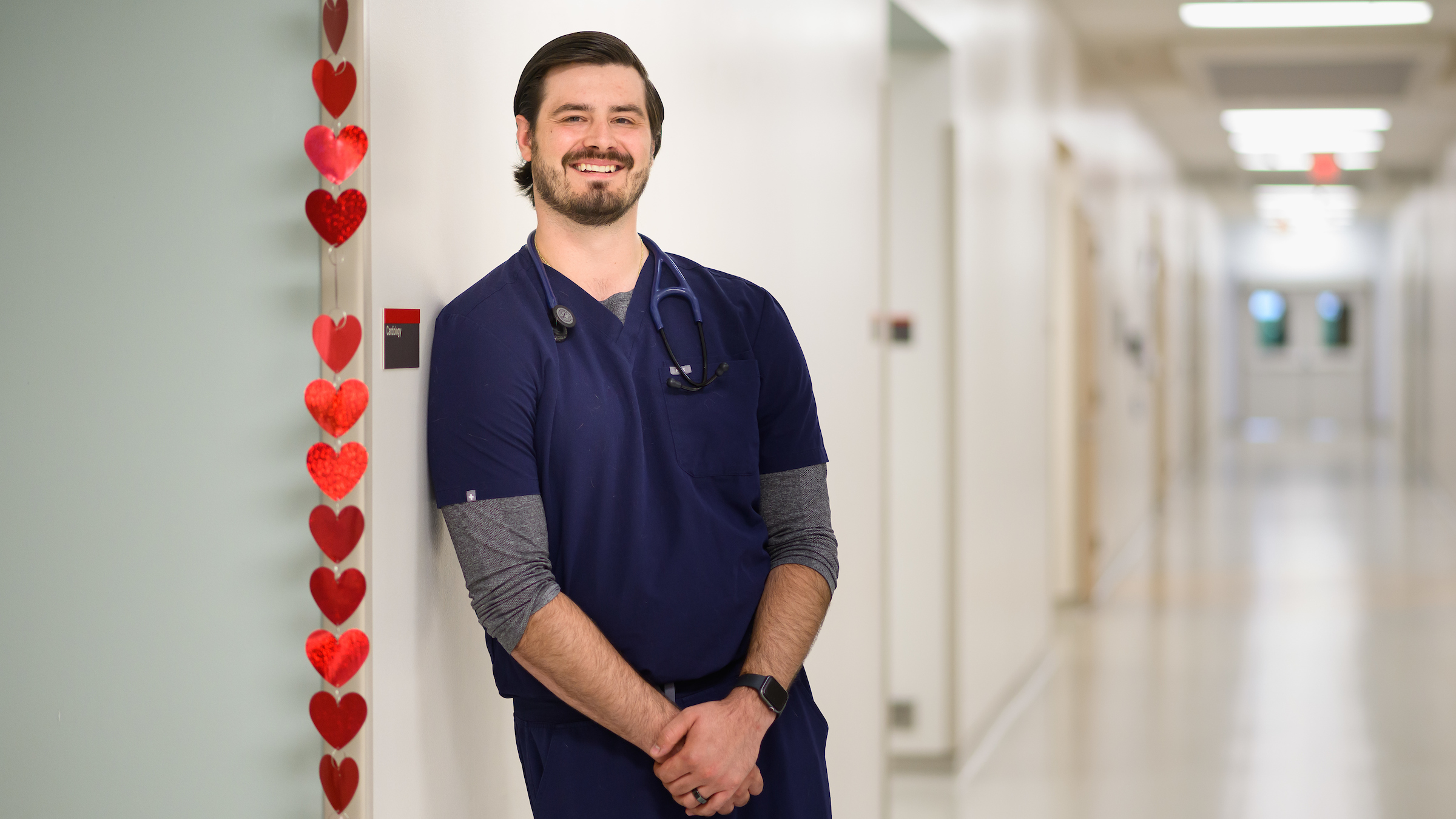Physics-iology! The Physics of Physiology for First-Year DVM Students

Sarah Blau, a member of the Class of 2017 at NC State University’s College of Veterinary Medicine, is sharing some of what she learns and experiences as a first-year veterinary student with readers of the CVM News Central Blog. Watch for these postings on a monthly basis.
“Tomorrow we’re going to talk about some physics…” said Dr. Swanson, and a low-level groan pervaded the classroom. Our physiology professor was alluding to the next day’s lecture on airflow through the respiratory system. Many of my classmates had hoped the days of physics were long past. But I was grinning. A friend looked my way with a quirk of the eyebrow, and I give her a big thumbs-up. I love physics, and I am super excited to be combining my undergraduate interest with my graduate studies.
You may recall from my first blog that I have a bachelor’s degree in physics. Now, it’s been a long time (6 years) since I studied physics, but even so, seeing the application of physics here in veterinary medicine brings a smile to my face. Two semesters of physics is a prerequisite requirement for applying to veterinary school. I was not really sure why the requirement existed until this semester of physiology got underway.
Physiology is the study of body systems and how they function. It is a huge field of science covering the countless physical and chemical properties and interactions that support life. For example, the first half of this semester we studied the cardiovascular system (heart and blood vessels) and the respiratory system (lungs and breathing). I never gave it much thought before now, but physics concepts play a major role in understanding how both these systems work. For example, the pressure difference inside and outside your lungs is what allows you to pull air into your chest when you breathe. Changing pressures and airflow? That’s physics!
Let me give you another example. I vaguely remember studying fluid dynamics my first year of undergraduate physics. “Suppose we have a perfectly cylindrical tube in a frictionless world with magical liquid flowing through it…” would be an example problem from a physics text. It can be hard to relate perfect, frictionless, magical textbook problems to the real world. But low and behold, blood vessels appear to be a pretty good real-world approximation of a cylindrical tube with low friction, and blood is truly a magical liquid! Physics describes the concept that a narrow tube provides more resistance than a wider tube, so fluid will more readily flow through a wider tube. Apply this concept to blood vessels, and we start to understand that this is how our body controls where blood goes at any given moment—blood vessels dilate (get wider) or constrict (get narrower) depending on what parts of the body require more blood!
The best thing about this “physiology physics,” is that it is applied physics. I mean, this physics is so applied, I can breathe in and out and feel the physics happening inside my lungs! I can put my stethoscope to my chest and hear the physics pounding away in my heartbeat. Seriously, I do this.
To be honest, not everyone in my class actually groaned at the mention of physics (though a slight groan WAS audible). But hopefully those students who suffered under the mathematical onslaught that was undergraduate physics, now have a better appreciation for how those concepts can be applied to understand key concepts in medicine. As Dr. Swanson has stated, there are certain equations in physics that help us understand how certain physiologic components fit together, and this helps us understand the bigger picture.
Understanding the physics of fluids like blood and of gasses like oxygen is an important component of our physiology education. Airflow and fluid dynamics are fundamental mechanisms that support life. As veterinarians, understanding these concepts will be critical for maintaining the vascular and respiratory health of an animal under anesthesia, or having heart problems, or with pneumonia. These, and others, are common problems encountered in veterinary practice, and life and death treatment, as well as long-term maintenance of these animals, depends on our understanding of the fundamentals of applied physics.
Yesterday I looked back through my college physics textbook—sitting in a place of honor on my bookshelf—and found a familiar-looking applied physics example right there in the fluid dynamics introduction. It was a question about blood flow! How little I suspected at the time of reading that textbook that this small sample concept would play such a prominent role in the rest of my life.


